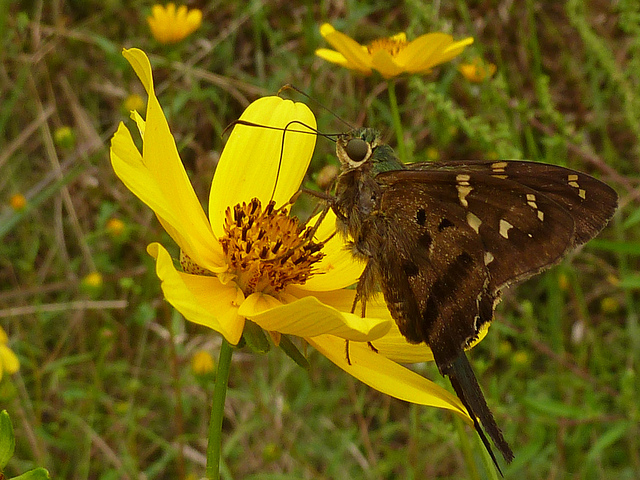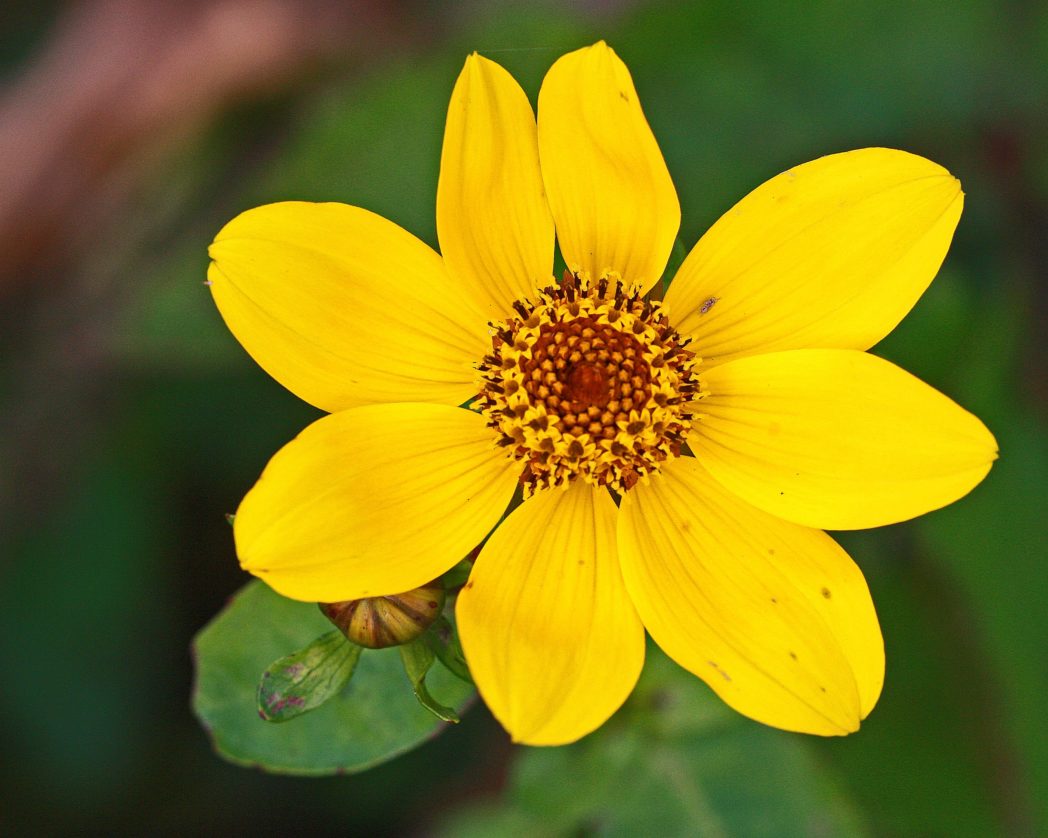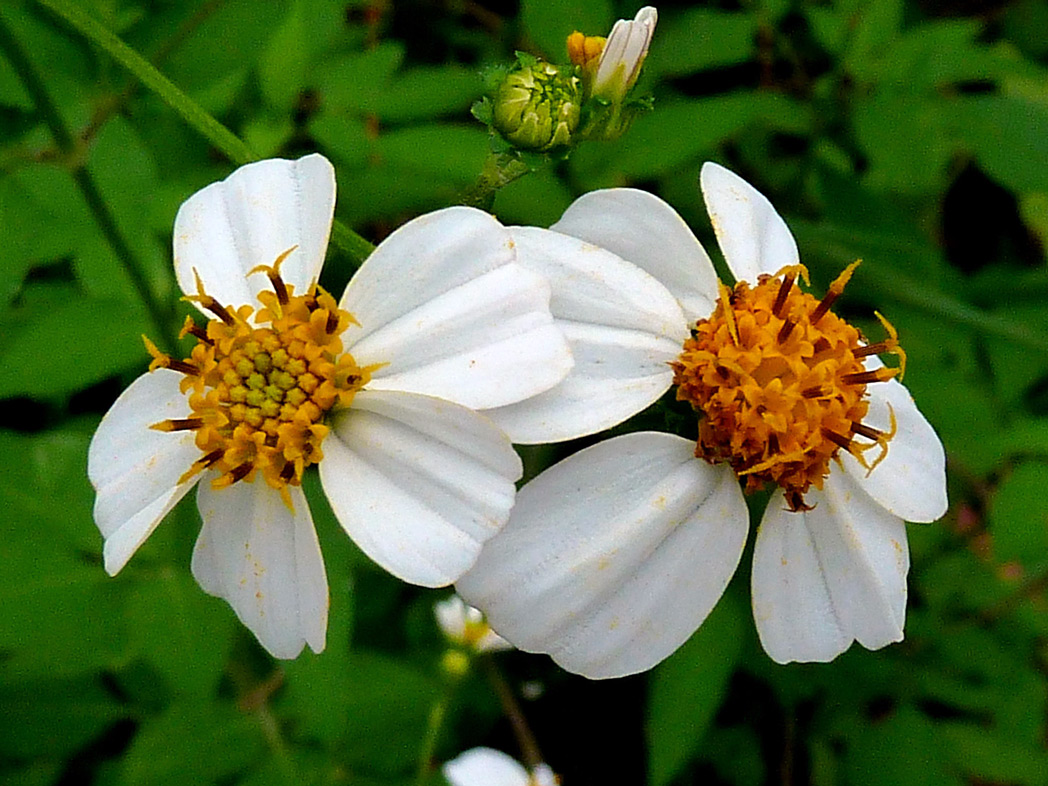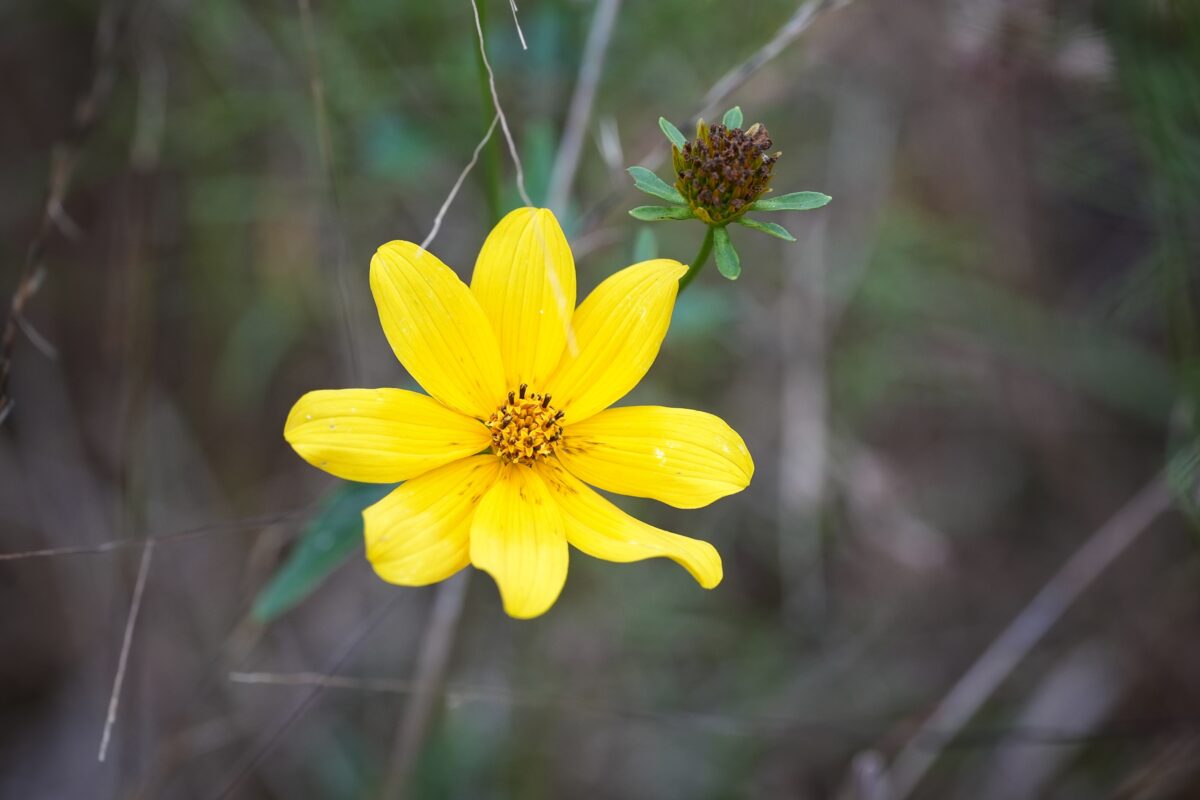Burr marigold
Pictured above: Burr marigold (Bidens laevis) by Mary Keim. Click on terms for botanical definitions. View post as a PDF.
Burr marigold (Bidens laevis) is an annual wildflower that grows en masse in wetlands and along river and marsh edges throughout Florida. It blooms in late fall through early winter and is an important source of nectar, attracting a wide variety of pollinators including bees, wasps and butterflies.

Burr marigold flowers consist of bright yellow ray florets and dark yellow to brownish disk florets. Its leaves are linear to elliptic in shape and oppositely arranged. Like others in the genus, its seeds have two barb-like bristles on the end that stick to clothing, hair and animal fur. The genus name Bidens comes from the Latin words bis, meaning “two,” and dens, meaning “tooth.”
Family: Asteraceae (Aster, daisy or composite family)
Native range: Throughout Florida
To see where natural populations of Burr marigold have been vouchered, visit florida.plantatlas.usf.edu.
Lifespan: Annual
Soil: Moist to wet or inundated soils
Exposure: Full sun to partial shade
Growth habit: 2–3’ tall
Propagation: Seed
Florida regions of landscape suitability: North, Central, South
Garden tips: A mass of Burr marigold can be beautiful in a large wetland planting, but it is not recommended for the small or formal landscape as it can spread prolifically.
Burr marigold is occasionally available at nurseries that specialize in native plants. Visit PlantRealFlorida.org to find a native nursery in your area.
Learn more about Burr marigold from the Florida Native Plant Society and the Institute for Regional Conservation.
For information on other Bidens species, see these resources:



